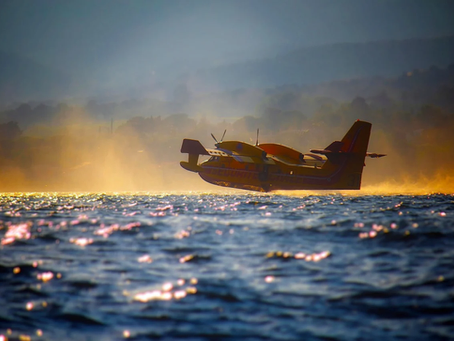Three Airplanes Every Pilot Should Fly
by Tomas Peralta
3 min read ·

So, you’re done with aviation school, you’ve moved on from being a student pilot to actually holding your pilot license in your hands—the next thing on your list should be to have fun with that license!
As a student pilot, you probably learned to fly in a standard old airplane in aviation school, rusty and overused by other students. The best way to start putting your pilot skills to the test is to explore the world of aviation through new machinery; flying different airplanes opens up the skies in new and exciting ways. All planes and models have a unique history and way of navigating across the skies (or waters!). Each new plane you fly will give you more insight into the cannon of aviation, making you a more seasoned pilot—one new airplane at a time
Here are 3 airplanes to add to you flying bucket list—each unique in their style and history.
Seaplanes
Flying a seaplane is at the top of this list because it is a completely new flying experience. A course is required to teach a pilot how to navigate this aircraft because you have to master the art of navigating on the water as well as in the sky. The challenges that the water offers are like no other, every landing and take-off is different because water (unlike a regular runway) is unpredictable, you have to take depth, obstructions, and waves into account. When a pilot masters landing and taking off on water, the world becomes your runway; after all, 80% of the planet is covered with water. You can choose to take your seaplane course in amazing locations like Lake Como in Italy or Christiansen Lake in Alaska; of course, if you live near a body of water, learning to fly a seaplane becomes much easier. No pilot experience is necessary, some student pilots even get their seaplane rating while they get their pilot license.
One thing is for sure, every pilot that has driven a seaplane has the same reaction—they say it’s the most fun they’ve ever had in the skies and on the water. Flying a seaplane will expand your horizons in terms of skills and abilities. Make yourself stand out as a pilot; only 3% of pilots are seaplane rated—making them highly regarded by all professional pilots.
Piper Club
The Piper Club is maybe the most revered aircrafts of all time. It was first introduced to the aviation world more than 75 years ago and if you were in aviation school in the 40’s and 50’s then you probably learned how to fly in a Piper Club. This airplane has defined aviation history in America as it taught entire generations of pilots how to fly and has still managed to be a deeply coveted aircraft in 2020. The Piper Club is a beautifully straightforward airplane that conveys the simple pleasure that is the essence of aviation. It is a symbol of survival as it remains a relevant tool to teach flying and invoke a love of flying because of its simplicity and elegance. The Piper Club was flown throughout WWII and flying it now makes you feel like flying back in time. Pilots say that flying a Piper Club is delicately harmonious, every turn is beautiful and clean—if something feels wrong you can be certain it is something you are doing because the plane is near perfection.
RV-12
The RV-12 is a tiny, almost disproportionate, aircraft that is considered a light sport aircraft (LSA) because of its speed, efficiency, and mechanically simple maneuvering. However, in recent years the RV-12 has transcended its LSA label because of its efficiency and size that almost tricks the eye. It is a roomy 2-seat plane, it allows for 50 pounds of luggage and 20 gallons of fuel, you can fly it cross-country and even land it on a grassy strip—it is as utilitarian as it is comical and exhilarating to fly. The RV-12 is exactly as fun as it looks, with its bug-eyed canopy, small body, and large wings, this airplane looks straight out of a cartoon. Its nimble handling and accessible high speeds allow you to reap the benefits of the light sports category especially if you are just barely getting into the sports arena of flying.
Reach Out Today